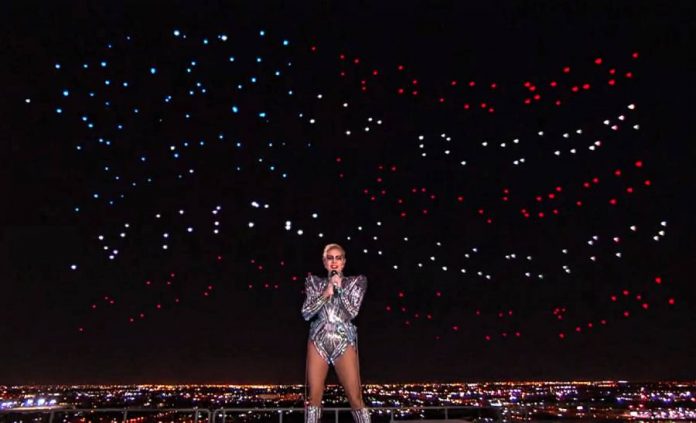
The fifty-first Super Bowl aired yesterday nationwide for a televised audience of approximately 160 million people around the world. At halftime, the chosen performer was Lady Gaga, who completed her act with a spectacular formation of drones in the night sky.
The little air crafts amazed viewers by turning into the Pepsi logo, then their creator Intel’s logo, and then the American flag. The Shooting Star drones made their first flight in 2015.
The technology behind them requires extensive coding and programming as each one of the drones functions entirely on its own. Intel plans to develop this technology further ahead so it can serve other fields besides entertainment.
How do these drones work?
The Shooting Star drones weigh no more than eight ounces (half a pound) and come in a square-shaped build with a big LED bulb at their center. Plastic and foam cover their entire surface so that it can survive accidental falls.
Each of the drones communicates with a center computer that tells them where to go and when. The system adapts automatically to assign each drone a part according to their current location and battery level.
For Lady Gaga’s halftime show, Intel used more 300 Shooting Star drones. This feat was not as extraordinary as it seems, given that Intel used 500 for a Sydney show in 2015, setting the world record for ‘most unmanned aerial vehicles flying simultaneously.’
The drones are only about a foot in size, and their LEDs can produce more than a billion color combinations. If one of them runs out of battery in the middle of flight, another takes off immediately to replace it following its code.
Intel had some issues to bring their drones to the Super Bowl
According to their official website, its Shooting Star drones comply with every regulation currently in place because of the FCC but don’t have their explicit approval. Besides, there are rulings against flying drones in low altitude and near Houston’s NRG Stadium.
Intel came up with the planning and timing for the drone show as early as last December. It developed the storyboard for the performative flight weeks ahead of their due date.
The company also received a special dispensation from the FBI that allowed to fly the drones in that particular instance.
Possible future uses for the Shooting Star drones
According to Anil Nanduri, the head of Intel’s drone research team, the Shooting Star drones could help with search and rescue efforts shortly.
They could also fly over to construction sites for inspection, as well as large farms. A group of several hundred drones with HD cameras could cover many acres of crops faster than humans.
Source: Wired










